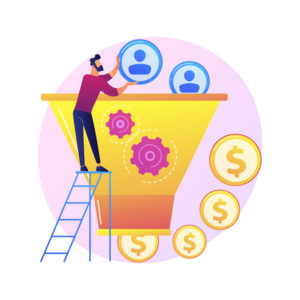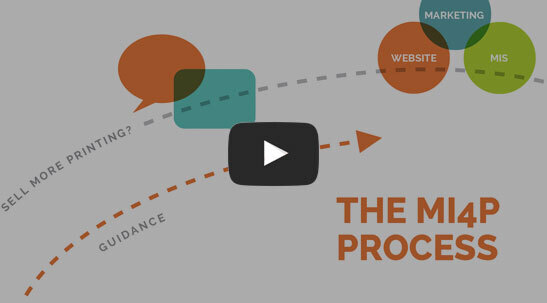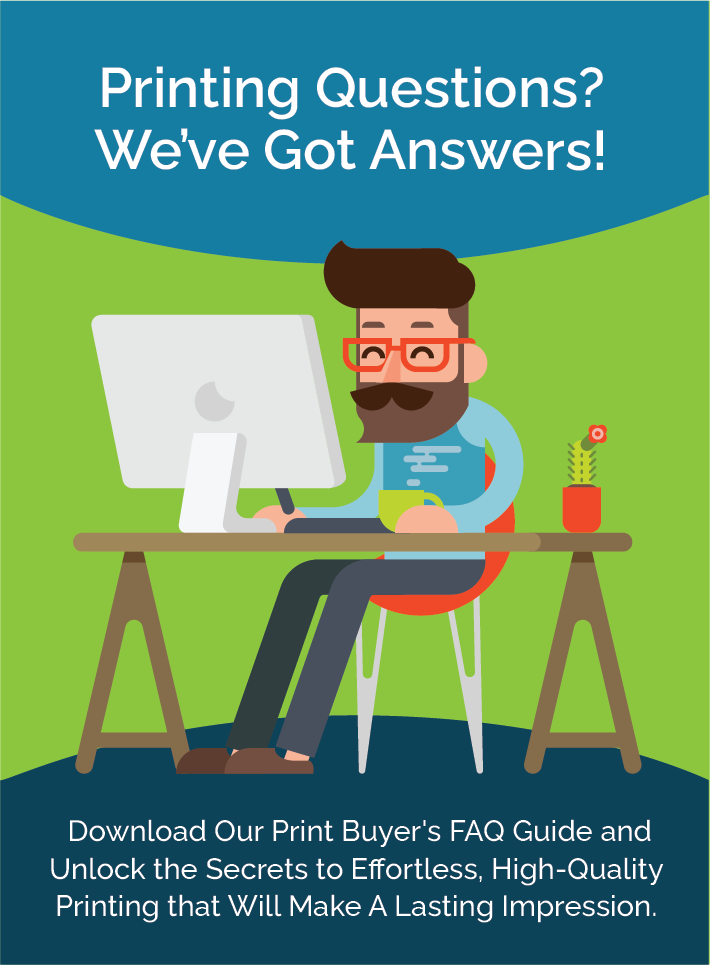In this six-part email series, you’ve been learning how to create the ultimate buyers’ journey for print buyers. And you’ve made great progress! So far, you’ve learned:
- What the ultimate buyers’ journey for your print buyers would look like
- What the Awareness Stage is and what types of content work best
- Content types and a better understanding of the Consideration Stage
- And last week, reaching the point of purchase within the Decision Stage
At this point, most people might think, “We brought our print buyer from the Awareness Stage, nurtured them through the Consideration Stage, and they’ve placed an order with us. There you have it… one, two, three, and we’re done!”
But, hold up a second. That line of thinking holds an essential piece of your print buyers’ journey that you cannot afford to overlook: When does your print buyers’ journey end, and what happens then?
That’s what you’ll unpack today. Take a look…
The End of the Line: Falling Out the Bottom of the Funnel
Did you know that the purchasing funnel concept has been around since 1898? Created by Elias St. Elmo Lewis, the sales/marketing funnel defined a buying journey by breaking it down into distinct stages: awareness, interest, desire, and action.

Today, you’ll see many varieties of these funnels with differing amounts of stages or levels and with different names. Still, the concept is generally the same: marketing leads come in through the top of the funnel, and sales come out through the bottom. If you don’t have enough sales coming out the bottom, you simply need to “widen the funnel” and get more leads pouring in.
Seems easy enough, right? So, what’s the issue?
Technology
The biggest change to the funnel concept is how customers, including your print buyers, interact with brands today.
Technology has affected everything from how consumers become aware of and interact with your brand to how they gain information about your products and services.
And, if Suzie Q. has an opinion to share about your products or the service she received with you, she’s no longer limited to sharing her thoughts with only her friends, family, or neighbors. Today’s Suzie Q. can almost effortlessly broadcast thoughts and opinions regarding your business anywhere in the world (both to your praise or detriment).
Distrust and Lack of Human Connection
Another blow to the funnel concept is that while online customer reviews continue to increase, there has simultaneously been a growing distrust of both marketers and salespeople.
This means people are looking more to word-of-mouth endorsements and recommendations from those they know and trust and to independent research instead of consulting with a company’s sales personnel. It also means that most touchpoints your business has with a potential client will be outside of your control.
The biggest thing to remember about a funnel ideology is that the output of the funnel is paying customers. Once they leave the funnel, they are often forgotten about, leaving your print buyers to feel like they’re just another number and leaving you missing out on repeat sales.
Enter the Flywheel: A Relationship-Building Approach
Today’s print buyers need a printer they can have a relationship with – a printer they can communicate with, and they can approach – an actual human being.
Consumers are tired of being dumped into a symbolic funnel and thought of as mere money in the bank or sales figures on a spreadsheet. This is where building and nurturing relationships before, during, and after an order is placed will be a fresh and welcomed approach by your audience. But how do you do that?
You change your mindset and approach from the funnel to a flywheel.
What is the Flywheel Approach for a Print Buyers’ Journey?
First off, if you’re unfamiliar with the term ‘flywheel,’ here’s a basic way to explain it:
A flywheel is a mechanical device designed to use momentum to store energy for future use.
In your car, for example, your flywheel helps to smooth out the delivery of power from your engine to your wheels. As Britannica.com states, “The inertia of the flywheel opposes and moderates fluctuations in the speed of the engine and stores the excess energy for intermittent use.”
But let’s get out of the car and get back to printing.
Just as your car engine needs a flywheel to store energy, marketers use the flywheel concept to gain the momentum of loyal customers. In other words, once your print buyer has made a purchase, they don’t fall out the bottom of the funnel. Rather they continue to be the center of every other process. Everything revolves around your print buyers’ experience in a flywheel, and it’s that energy that fuels all of your continued growth. What’s more, your print buyers are never lost energy because they never fall out of the loop.
Here’s a simple way to see the difference between a funnel and a flywheel approach to your buyers’ journey:
| Funnel | Flywheel |
| Print buyers are an output. | Print buyers are the most important input. |
| Print buyers are lost energy (many come in the funnel, only a few come out). | Print buyers are stored energy that will drive continued future growth. |
| Has an end-point causing a “start from scratch” mindset with each new effort. | Is ongoing and focused on using existing assets (stored energy) to keep growth moving. |
| Focuses on “widening the funnel” (shotgun approach that filters through many). | Focuses on delighting customers for repeat purchasing (rifle approach that focuses on relationship). |
| Large investment into brand awareness for acquiring customers. | Efforts placed on things that bring joy to your print buyers, making them your brand ambassadors and reaping greater ROI. |
How A Flywheel in Action Might Look for Your Print Business
Let’s put the flywheel approach into a real-life example.
Since we used Suzie Q. above, let’s pretend Suzie Q. is your potential print buyer and you want to get her into your marketing flywheel. What steps would you need to take?

1. Attract Suzie to Your Brand
Your first step is to draw Suzie into your brand through engaging and useful content that’s just right for her. This could be through traditional methods such as word of mouth, paid ads, reviews and testimonials, or inbound marketing. The main thing to remember here is your content needs to be interesting to Suzie and be helpful to her. And trust us in this; Suzie is not looking for clickbaity, toot-your-own-horn kind of content.
2. Engage Suzie and Seek to Understand Her
Next, your focus should be on creating a meaningful relationship with Suzie by seeking to understand what motivates her, what her pain points are, or what upcoming opportunities she has. Your goal here is to genuinely empathize with Suzie so you can provide a solution(s) that will truly satisfy. For example, offering helpful, how-to blogs or social media content she would benefit from reading.
3. Bring Suzie Joy (A.K.A. Delight)
Lastly, focus on bringing Suzie joy in her continuous journey with you. If you focus on delighting your print buyers before, during, and after printing, they will enjoy an impactful experience and want to promote your brand to other print buyers. They will become ambassadors of your brand and customer advocates who will then bring even more print buyers into your flywheel.
How do you bring a print buyer joy? It’s simpler than you think. It could be as simple as your return policy, shipping options, reward programs, superior customer support, or even just regular check-ins to remind them that you’re a real-live human that cares about their success in this world.
Next Steps
You’ve learned a lot in this series and have a lot to consider going forward. Stick around for the last email in our series coming next week, where you’ll learn how to take everything you’ve learned thus far and turn it into more printing sales for your business. See you back here soon!



